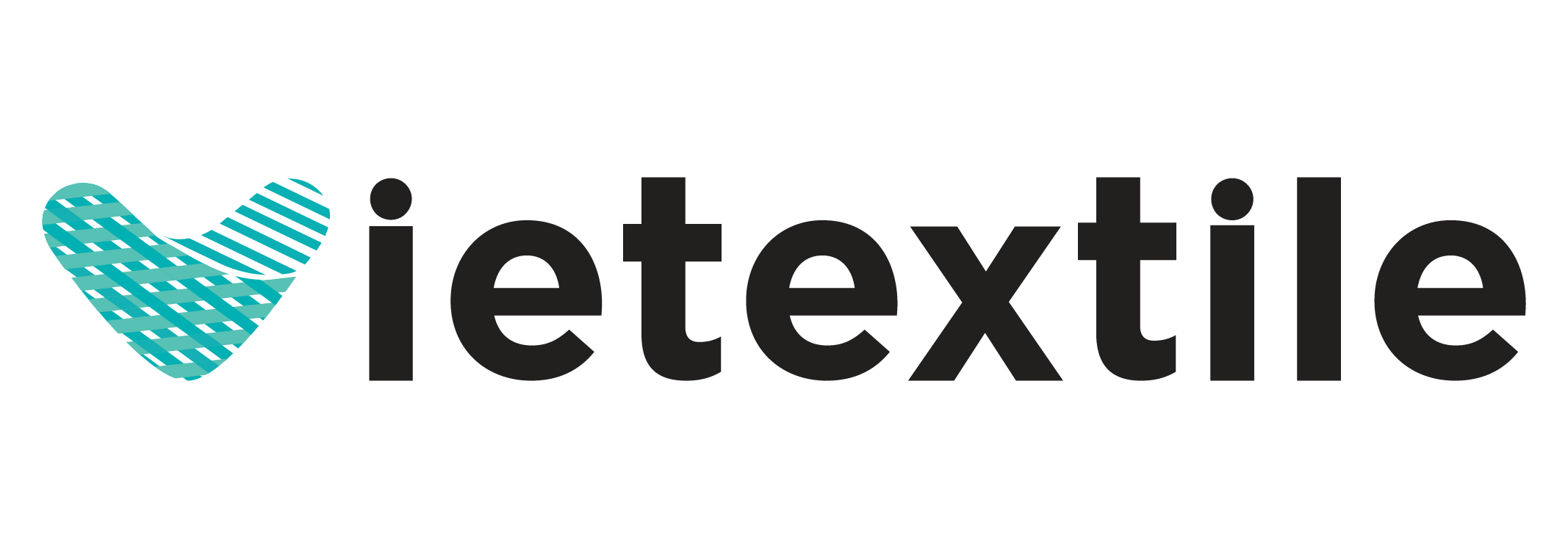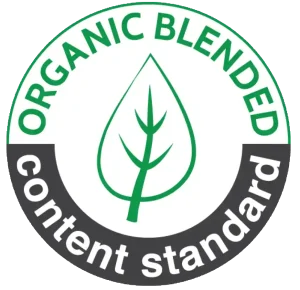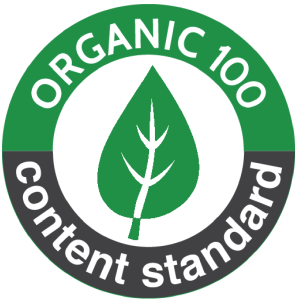Silk has long been revered as the “Queen of Textiles,” synonymous with luxury, smooth texture, and natural sheen. While digital printing on polyester and cotton has become commonplace, successfully executing high-quality, high-resolution direct printing on silk fabrics presents a unique set of challenges due to silk’s delicate nature, complex fiber structure, and affinity for specific dyes.
Vietnam, with its deep-rooted history in silk production and its rapid adoption of advanced digital textile technology, has become a key player in supplying digitally printed silk to high-end fashion houses globally. The industry’s success hinges on its specialized knowledge of different silk types—including Mulberry, Habotai, Satin, and Organza—and the precise adjustments needed in pre-treatment, dyeing, and post-treatment to achieve flawless vietnam direct printing silk fabric results.
This comprehensive guide explores the unique properties of these popular silk variants and the specialized techniques Vietnamese manufacturers employ to master their digital printing potential.
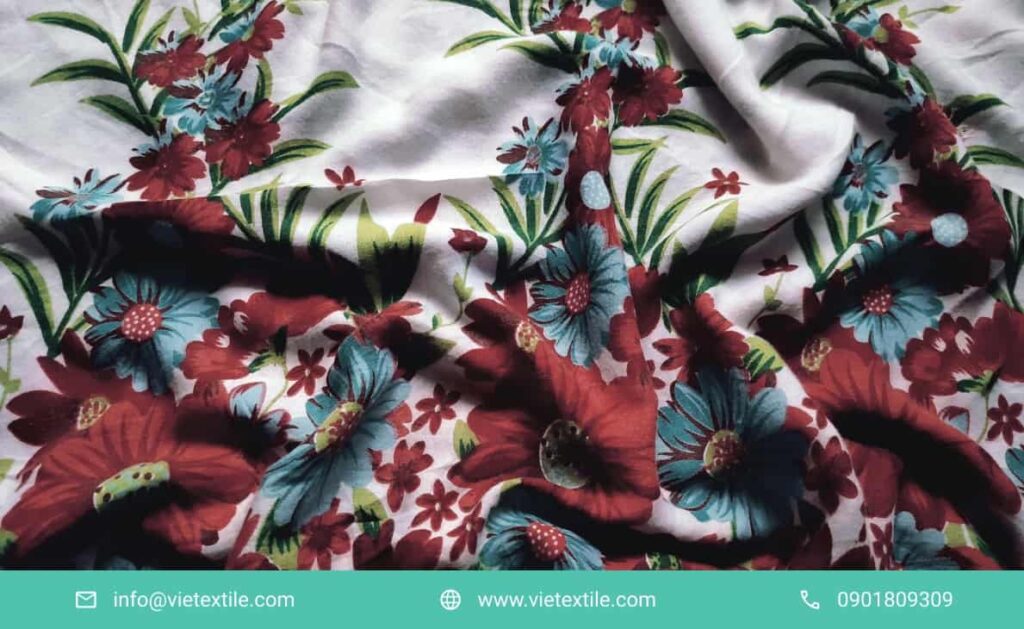
1. The Complexities Of Direct Printing On Vietnam Direct Printing Silk Fabric
Nội dung tóm tắt
TogglePrinting directly onto silk (often using reactive or acid dyes) requires chemical precision, mechanical gentleness, and absolute control over temperature and humidity. Unlike synthetic fibers, which typically use dye-sublimation, natural silk requires dyes that chemically bond with the protein structure of the fiber. This difference necessitates a highly controlled, wet-processing workflow.
This chemical bonding process is highly sensitive to external factors, including the type of dye, the steaming process (which fixes the color), and the final washing (which removes unfixed dyes). Vietnam’s expertise in managing these variables for different silk textures is what drives the quality of vietnam direct printing silk fabric. This meticulous process ensures that the final product retains its luxurious drape, vibrant color, and soft hand feel, making it suitable for high-end garments and accessories.
1.1. Why Silk Demands Chemical Precision: Acid and Reactive Dyes
Silk is a protein fiber (fibroin and sericin), which means it reacts differently to dyes than cellulose (cotton) or thermoplastic (nylon/polyester) fibers. For digital printing on silk, manufacturers primarily use Acid or Reactive inks. Acid dyes offer brilliant colors and excellent wash fastness but require an acidic environment and high-pressure steam for fixation.
Reactive dyes are generally preferred for higher color yields, superior wet fastness, and increasingly, for environmental compliance, chemically binding directly to the silk molecules. The success of vietnam direct printing silk fabric depends on the correct selection of these dyes and the critical application of pre-treatment chemicals (typically acidic salts, specialized thickeners, and urea) that prepare the silk surface to accept and hold the dye molecules precisely, preventing lateral bleeding or blurring of the high-resolution image. The choice of dye system is finely tuned based on the required color gamut and the end-use performance specifications.
1.2. Gentle Handling And Mechanical Stress: The Need for Low-Tension Systems
Silk is incredibly strong for its diameter, yet it is highly susceptible to mechanical damage, abrasion, and permanent creasing when wet. The digital printing process—which involves wetting the silk with pre-treatment solution, transporting it through a high-speed printer, and then subjecting it to steaming and washing—requires highly specialized, low-tension machinery.
Vietnamese facilities utilize continuous digital printers equipped with non-contact or minimal-contact transfer systems. Crucially, these machines feature highly precise tension controls (often driven by servo motors) that constantly monitor and adjust the fabric pull, ensuring the delicate vietnam direct printing silk fabric is never overstretched, compressed, or distorted. Preserving the silk’s natural elasticity, warp, and weft alignment is essential for maintaining its natural luster and minimizing damage. The gentle handling throughout the process is a key differentiator in achieving premium quality.
1.3. The Steaming And Washing Dilemma: Fixation and Soaping
The most critical step in fixing the dye on vietnam direct printing silk fabric is high-pressure steaming. This heat and moisture activate the chemical reaction that permanently bonds the dye to the silk. Incorrect temperature or duration can lead to either under-fixation (resulting in poor wash fastness and color loss during washing) or over-fixation (leading to damage to the silk fiber, making it brittle or dull). Continuous belt steamers are engineered to maintain a saturated steam environment at the exact required temperature (typically 100°C to 102°C).
Following steaming, the silk must undergo a thorough washing (or ‘soaping’) process to remove all unfixed dyes, residual pre-treatment chemicals, and any remaining sericin. This washing must be done gently in specialized soaping ranges using specific pH-neutral detergents and controlled water temperatures to prevent tangling, felting, or loss of hand-feel of the silk. Vietnam’s expertise in this complex final stage ensures the colors are set permanently while the fabric retains its supreme softness and drape, validating the quality of vietnam direct printing silk fabric.
1.4. Pre-treatment Formulation and Standardization
Successful digital printing on silk is often 50% chemistry. The pre-treatment solution applied to the raw silk before printing is a complex chemical cocktail designed to achieve three main goals:
- Immobilization: Thickeners, primarily natural guar or synthetic agents, keep the dye droplets from spreading laterally, ensuring high-definition print edges.
- Dye Solubilization: Urea acts as a humectant and solubilizing agent, helping the dye remain dissolved and maximizing its reaction potential during steaming.
- pH Control: Acid-generating agents ensure the environment is chemically conducive for the reactive or acid dyes to bond with the silk protein structure.
Vietnamese manufacturers have established standardized pre-treatment formulations that are fine-tuned for different silk qualities (e.g., using less aggressive agents for thinner Habotai versus heavier Mulberry Satin). This standardization across the supply base ensures consistent chemical performance, a hallmark of reliable vietnam direct printing silk fabric production.
2. Mulberry Silk: The Pinnacle Of Vietnam Direct Printing Silk Fabric
Mulberry silk is the most common and highest quality type of silk available, accounting for nearly 90% of the world’s supply. It is cultivated from the silkworms of the Bombyx mori moth, which feed exclusively on mulberry leaves. The resulting fibers are long, uniform, smooth, and naturally lustrous (due to minimal interruptions in the filament), making them the ideal canvas for premium vietnam direct printing silk fabric.
Its uniformity allows for the clearest, sharpest print resolution and the most accurate color reproduction. Designers often choose Mulberry silk for high-value items like luxury scarves, ties, and haute couture garments where print fidelity and hand feel are paramount. Its smooth, continuous filament structure minimizes light scattering, resulting in a vibrant, almost luminous appearance for the finished print.
2.1. Optimized Pre-Treatment For Mulberry Fibers
Due to the exceptional smoothness and purity of Mulberry silk, the pre-treatment process focuses on achieving optimal surface tension without compromising the fiber’s natural sheen. The chemical mix is carefully balanced, often utilizing a slightly higher concentration of thickeners (alginate) to prevent dye spread, allowing the inkjet droplets to land precisely where intended.
For high-resolution photographic images printed on vietnam direct printing silk fabric, the pre-treated Mulberry silk provides the cleanest surface, enabling the digital printer to achieve maximum DPI (dots per inch) and seamless color blending (halftoning). The inherent quality of the fiber ensures that the color penetration during steaming is consistent across the entire length of the textile, resulting in prints that are sharp and durable.
2.2. Common Uses In High-End Fashion
Mulberry silk is the material of choice for Vietnamese manufacturers producing high-end printed goods for export due to its superior strength and flawless surface.
Examples of products using digitally printed Mulberry vietnam direct printing silk fabric include:
- Luxury designer scarves with detailed artwork (often 12-16 Momme).
- Bespoke kimono, robes, and silk pajamas.
- High-end lining fabrics for custom suits and jackets.
- Cushion covers and luxury home textiles.
The investment required to print on Mulberry silk is justified by the superior final product, which commands a premium price in the global luxury market.
2.3. The Role of Momme Weight in Printing Quality
Momme (mm) is the traditional unit used to measure the weight of silk fabric, representing the weight in pounds of a piece of silk 45 inches wide and 100 yards long. Momme weight significantly impacts the printing process and the final product feel:
- Lightweight Silk (8-12mm): Prints achieve excellent strike-through (showing clearly on the reverse side), perfect for sheer scarves and delicate lingerie. However, they are more susceptible to tension damage.
- Medium Weight Silk (14-19mm): The industry standard for scarves and apparel. This weight offers a great balance of drape, durability, and ink-holding capacity, resulting in richer, more opaque colors.
- Heavyweight Silk (22mm+): Used for bedding and furnishings. These thick silks require maximum dye load and longer steaming times to ensure full color penetration and wash fastness.
Vietnamese facilities must adjust their steaming profiles and ink consumption for every momme weight to optimize the quality of vietnam direct printing silk fabric.
3. Habotai Silk: The Lightweight Choice For Vietnam Direct Printing Silk Fabric
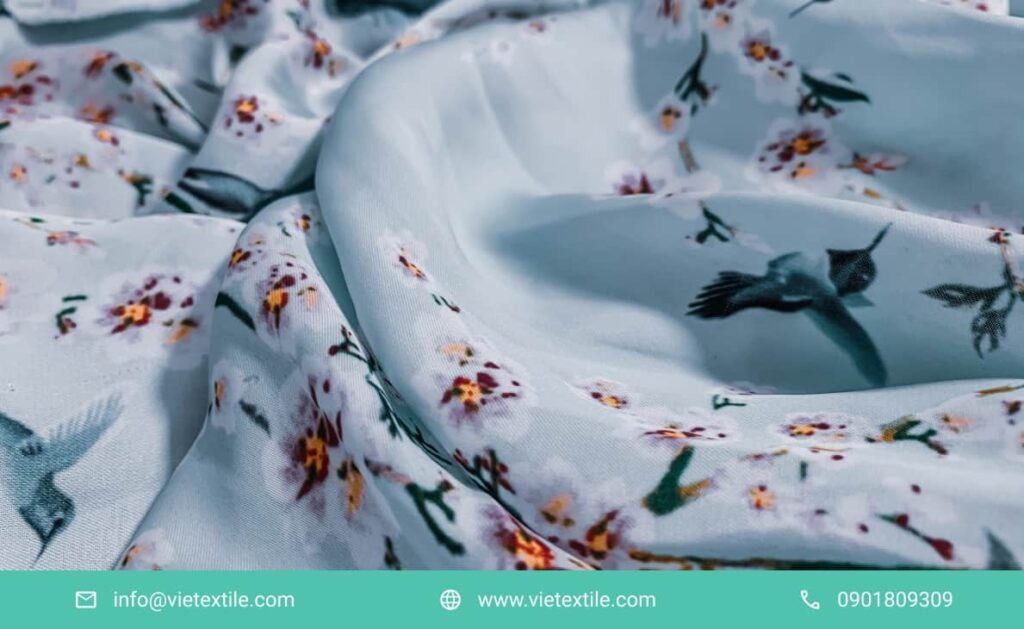
Habotai, often referred to as ‘China silk’ (though now widely produced in Vietnam), is a plain-weave silk known for its lightness, airy feel, and beautiful soft drape. It is less lustrous than Mulberry Satin but offers a very fine, smooth surface, making it an excellent and more economical choice for quality vietnam direct printing silk fabric.
Its characteristic lightness makes it suitable for items requiring significant flow and drape, such as summer blouses, light scarves, and delicate lingerie. The main challenge with Habotai is its sheerness; the ink must be perfectly fixed to prevent show-through or dullness when the fabric is layered or held up to light. Vietnamese printers expertly adjust their dye load and steaming process to maximize vibrancy while maintaining the fabric’s delicate weight.
3.1. Adjusting Ink Penetration On Light Fabrics
Because Habotai is lightweight (typically 8mm or less), controlling the ink load is essential for successful vietnam direct printing silk fabric. If too much dye is applied, it can cause the fabric to stiffen, distort its natural, soft flow, or risk bleeding across the sheer structure. The goal is complete dye penetration through the light fabric (known as ‘strike-through’) without oversaturating the fibers.
Manufacturers adjust the RIP (Raster Image Processor) software to use a reduced ink limit while ensuring the steaming process is precisely executed to drive the dye deep into the thin fiber matrix. This ensures the design is visible with clarity on both sides of the sheer Habotai, a critical feature for scarves and transparent garments, achieving a result close to double-sided printing.
3.2. Versatile Applications In Apparel And Accessories
Habotai silk’s smooth finish, relatively easy handling, and affordability make it one of the most versatile choices for the vietnam direct printing silk fabric sector. It balances aesthetic quality with a viable production cost, making it popular for mid-to-high-range apparel.
Key applications include:
- Lightweight blouses, shirts, and summer dresses.
- Summer wraps, sarongs, and sheer neckerchiefs.
- Inner lining for high-end garments where a soft, breathable material is required.
- Flag and banner production for indoor displays (where double-sided visibility is valued).
The combination of its fine texture and the precision of digital printing makes Habotai a staple for detailed yet affordable silk products.
3.3. Balancing Cost and Print Quality in Habotai Production
Habotai often serves as the entry point for brands seeking printed silk at a competitive price point. Vietnamese manufacturers are skilled at optimizing the workflow for volume printing on Habotai. This involves using faster printing modes and slightly reducing the pre-treatment concentration (without compromising quality) to increase throughput. The cost-saving strategy focuses on maximizing machine uptime and minimizing material waste, rather than sacrificing dye quality. This meticulous process ensures that while the cost is kept competitive, the output quality of vietnam direct printing silk fabric remains superior to mass-produced alternatives.
4. Silk Satin: Maximizing Sheen With Vietnam Direct Printing Silk Fabric
Silk Satin is characterized not by its fiber content (which is typically Mulberry silk), but by its complex weave structure. The satin weave creates a highly lustrous, smooth, and reflective surface on the face of the fabric and a duller finish on the reverse. This high gloss surface is prized for evening wear, luxury bedding, and statement accessories, often chosen for its luxurious feel and dramatic light reflection.
Printing on Silk Satin requires careful consideration of light reflection. The print must be applied so that the high reflectivity of the satin weave enhances, rather than disrupts, the color and design integrity. Vietnamese manufacturers leverage the digital process to create intricate, high-contrast designs that utilize the natural sheen of the silk to add depth and dimension to the finished vietnam direct printing silk fabric.
4.1. Dealing With High Reflectivity And Print Integrity
The smooth, tightly woven surface of Silk Satin can be challenging because any slight imperfection in the dye application, the tension control, or the fixation process is immediately highlighted by the reflected light. The printing process must ensure absolute registration accuracy and uniform dye distribution to prevent visible banding or streaks.
To prevent color ‘skip’ (where the dye misses the lowest points of the weave structure), the pre-treatment paste often contains higher viscosity agents. This helps to hold the fabric absolutely flat and ensures the dye droplets are accurately absorbed across the highly reflective surface, ensuring a vibrant and uniform appearance in the final vietnam direct printing silk fabric, which is critical for a flawless glossy finish.
4.2. Best Practices For Silk Satin Post-Treatment
After steaming, the washing of Silk Satin is performed with extra care. Due to the long float threads that give Satin its sheen, the fabric is more prone to abrasion, snagging, and losing its characteristic luster when wet. Manufacturers in Vietnam often utilize specialized washing baskets or low-tumble machinery with minimal mechanical action to gently remove residual chemicals.
This careful post-treatment preserves the integrity of the satin weave and ensures the print’s vibrancy and the fabric’s supreme softness. Silk Satin vietnam direct printing silk fabric is essential for products where visual luxury and a dramatic appearance are the main selling points.
4.3. Minimizing Pin-Hole Defects in Silk Satin
A common challenge unique to printing on Silk Satin is the occurrence of pin-hole defects—tiny, unprinted white spots. These are caused by microscopic air bubbles or slight irregularities on the fabric surface preventing ink contact. Vietnamese printing houses utilize specialized techniques to counter this:
- Vacuum Suction: Employing gentle vacuum systems beneath the print head area to draw the fabric flat and eliminate trapped air.
- Smoother Application: Using precise, uniform adhesive coatings on the printing blanket to ensure the entire surface of the satin is held taut and perfectly flush with the print head.
This meticulous attention to surface preparation is what ensures a smooth, unbroken color field on the high-gloss surface of printed Silk Satin.
5. Silk Organza: Mastering Sheerness And Structure
Silk Organza is a sheer, lightweight, yet stiff fabric, typically used for structured garments, bridal wear, and theatrical costumes. Its stiffness comes from a tight, open plain weave and a process called ‘degumming,’ which partially removes the sericin (gum) from the fibers, leaving a crisp hand.
Printing on Organza is the ultimate test of control because of its extreme sheerness and open structure. The print must be flawless with perfect strike-through and zero bleed, as the fabric is often used as an outer, translucent, and highly visible layer. Vietnam’s proficiency in printing Organza allows for stunning, translucent textile designs.
5.1. The Sheerness-Resolution Trade-Off
The open weave of Silk Organza means the fine detail of high-resolution digital prints can be compromised if the ink bleeds or spreads into the neighboring open spaces. Furthermore, the crispness of the fabric requires minimal liquid application to prevent the fabric from collapsing or losing its structure.
Vietnamese printers employ extremely fine-nozzle print heads and highly controlled pre-treatment application to achieve the perfect balance. The goal is to print with just enough dye to ensure penetration (strike-through) while maintaining the structural integrity of the crisp, open weave, resulting in high-quality vietnam direct printing silk fabric that retains its delicate structure.
5.2. Applications In Structured and Layered Fashion
Silk Organza’s translucent nature and structural properties make it perfect for creative layered effects in high fashion.
Printed Organza vietnam direct printing silk fabric is commonly used for:
- Bridal veils, trains, and decorative overlay fabrics.
- Structured sleeves, collars, and voluminous ruffles that require stiffness.
- Theatrical and costume design elements requiring a rigid, sheer appearance.
- Layering over opaque silk satin to create depth and shadow effects.
The successful printing on Organza showcases the Vietnamese industry’s ability to handle the most technically difficult and structurally sensitive natural fabrics.
5.3. Structural Integrity and Post-Print Finishing for Organza
The characteristic “crisp” hand of Organza is derived from its processing, and this stiffness can be partially lost during the wet stages of printing, particularly the washing process. To restore its structural integrity, a specific post-print finishing process is often necessary for Organza vietnam direct printing silk fabric. This typically involves:
- Stiffening Agents: Applying a light, controlled application of finishing chemicals or starches.
- Controlled Drying: Utilizing high-precision tenter frames or drying cylinders to dry the fabric under slight tension, helping to set the desired width and restore the crisp hand-feel.
This final attention to texture ensures that the digitally printed Organza fabric meets the designer’s requirements for structure as well as visual appeal.
6. VieTextile’s Role In Supporting Vietnam Direct Printing Silk Fabric Quality
The precision required for successful vietnam direct printing silk fabric, especially when dealing with delicate and high-value materials like Mulberry and Habotai, relies entirely on the flawless operation of specialized digital printing and finishing machinery. VieTextile is the essential partner ensuring this operational excellence across Vietnam.
We specialize in supplying high-precision textile spares critical to the function of silk printing machinery. This includes specialized print heads (e.g., Kyocera, Epson) capable of jetting highly concentrated acid or reactive dye inks accurately, gentle tension control rollers that prevent stretching of wet silk, and precision parts for industrial steamers and soaping ranges. We understand that a breakdown in any of these components can result in permanent damage to high-value silk rolls and compromise production schedules. Our focus is minimizing this risk by supplying reliable, certified components.
VieTextile maintains an inventory of certified spare parts designed for delicate fabric handling. For instance, the exact timing and temperature controls of the large continuous steamers are paramount for fixing the dyes on vietnam direct printing silk fabric. We supply the genuine sensors, heating elements, and conveyor systems that ensure these critical parameters are met consistently, batch after batch. Our technical team works closely with production engineers, providing preventative maintenance solutions tailored specifically to the chemical and thermal stresses of silk digital printing, including the corrosive nature of acid dye residues on metal parts.
Our commitment to quality means that manufacturers can rely on their machinery to handle the unique demands of Silk Satin’s reflective surface or Organza’s open weave without fear of mechanical failure or print defect. By ensuring the reliability and precision of the hardware, VieTextile indirectly supports the high aesthetic standards and luxury positioning of vietnam direct printing silk fabric in the global market.
7. Quality Control and Export Standards for Printed Silk

For premium high-fashion and luxury goods, vietnam direct printing silk fabric must adhere to stringent international quality control (QC) standards. QC is not just a final check; it is an integrated process ensuring both chemical safety and print durability.
7.1. Colorfastness to Washing (ISO 105 C06)
This test is critical to prove the dye has been properly fixed to the silk fiber. Samples of the printed silk are washed under controlled conditions (temperature, agitation, and detergent) alongside adjacent unprinted fabrics (multi-fiber swatches). The QC team assesses the degree of color change on the printed silk and the degree of staining on the adjacent swatches. High-quality vietnam direct printing silk fabric must achieve a high grade (typically 4 or higher) to be deemed commercially acceptable.
7.2. Colorfastness to Rubbing (Crocking – ISO 105 X12)
Printed silk, particularly on Silk Satin and heavy Mulberry, must withstand friction without transferring color to other materials. The crocking test uses a white cotton cloth rubbed against the printed silk under wet and dry conditions. This is essential for garments that rub against the skin or other garments, ensuring the print remains stable and does not bleed when exposed to light friction.
7.3. pH Balance and Skin Safety (OEKO-TEX Compliance)
As silk is often worn directly against the skin, the final fabric pH is paramount. After the washing/soaping process, the fabric must have a neutral pH (typically between 5.0 and 7.5). QC labs monitor this meticulously because an acidic pH can irritate the skin, while an alkaline pH can damage the silk fiber over time. Compliance with standards like OEKO-TEX Standard 100 is mandatory for export-grade vietnam direct printing silk fabric, ensuring the absence of harmful substances and perfect skin compatibility.
7.4. Print Registration and Repeat Accuracy
Digital printing offers superior registration compared to screen printing. QC checks involve examining the entire length of the roll for print-repeat errors or banding (streaks) caused by nozzle clogging or uneven tension. Specialized optical scanners are used to verify that the high-resolution designs remain sharp and free of defects, ensuring the seamless quality of every meter of vietnam direct printing silk fabric.
8. The Silk Supply Chain and Sourcing in Vietnam
Vietnam’s strategic position in the global textile economy allows for a flexible and robust silk supply chain, catering to both traditional craftsmanship and industrial scale.
8.1. Sourcing Raw Silk: Domestic Heritage and Global Access
While Vietnam has a rich heritage of domestic silk production (e.g., in provinces like Lam Dong), the high-volume demand from international clients often requires supplementing with premium imported raw silk, primarily from China, which provides standardized, large-quantity filaments. Vietnamese manufacturers expertly manage this blended sourcing strategy:
- Domestic Silk: Often favored for artisanal, niche, or hand-finished products due to its unique texture and traceability.
- Imported Silk: Used for high-volume orders (Mulberry Satin, Habotai) where strict filament specifications and price consistency are required.
This dual sourcing capability provides brands with flexibility and supply security when ordering vietnam direct printing silk fabric.
8.2. Traceability and Ethical Manufacturing
Luxury brands demand full traceability of their silk, from the mulberry farm (sericulture) to the final printed fabric. Vietnamese supply partners invest in digital tracking systems that map the yarn batch, weaving mill, and printing run. This is essential for verifying organic or ethical sourcing claims. Furthermore, Vietnamese facilities are increasingly audited for labor and environmental compliance, reinforcing the ethical production profile of vietnam direct printing silk fabric.
8.3. Future Trends: Expanding into Peace Silk and Alternative Fibers
The Vietnamese industry is beginning to explore niche markets such as “Peace Silk” (Ahimsa Silk), where the silkworm is allowed to emerge naturally from the cocoon. While more labor-intensive, this aligns with high-end ethical fashion trends. Additionally, research is ongoing into blending silk with sustainable alternatives like Tencel or Lyocell, combining silk’s luxurious hand-feel with the sustainability benefits of cellulosic fibers, potentially opening new avenues for vietnam direct printing silk fabric.
9. Conclusion: Vietnam’s Unrivalled Position in Printed Silk
Vietnam’s dominance in the specialized niche of vietnam direct printing silk fabric is secured by its convergence of centuries-old silk tradition and advanced industrial technology. The nation’s ability to handle the subtle yet profound differences between Mulberry’s luminescence, Habotai’s lightness, Satin’s reflectivity, and Organza’s structure—all while adhering to strict global quality standards—makes it an indispensable partner for luxury and high-end fashion brands worldwide.
This expertise, coupled with a vertically integrated supply chain and a commitment to chemical precision, ensures that the digital prints achieved in Vietnam are not only visually stunning but are chemically bonded and mechanically durable, maximizing the lifespan and value of the finished garment.
10. Frequently Asked Questions (FAQ) About Vietnam Direct Printing Silk Fabric
10.1. Which Type Of Silk Gives The Most Vibrant Colors When Printed?
Mulberry Silk generally yields the most vibrant colors for vietnam direct printing silk fabric. Its smooth, white, and highly uniform fiber structure ensures maximum light reflection and provides the cleanest substrate for the dye molecules to bond, resulting in superior color depth and clarity compared to raw or less-refined silks.
10.2. Is Digital Printing On Silk More Sustainable Than Traditional Screen Printing?
Yes, digital printing used for vietnam direct printing silk fabric is significantly more sustainable. It uses far less water because it eliminates the need for repeated washing of screens. Furthermore, it generates minimal dye waste, as the inks are applied directly and only the necessary amount is used, leading to an overall smaller environmental footprint.
10.3. What Is The Best Way To Care For Digitally Printed Vietnam Direct Printing Silk Fabric?
Care for digitally printed silk should follow standard silk guidelines: hand wash or dry clean is recommended. Avoid harsh detergents, machine drying, and direct sunlight when drying. The digital prints are highly durable, but the silk fiber itself remains delicate. Always wash and iron the vietnam direct printing silk fabric inside out.
10.4. Does Printing Affect The Hand Feel (Drape) Of Silk Fabric?
A well-executed digital print on vietnam direct printing silk fabric should not negatively affect the hand feel. The use of acid or reactive dyes, which bond chemically to the fiber rather than sitting on the surface (like plastisol inks), ensures the silk retains its natural soft drape and luxurious feel. A harsh feel is usually a sign of incorrect pre-treatment or incomplete washing (soaping).
10.5. What Is The Main Advantage Of Printing Silk In Vietnam Over Other Regions?
Vietnam’s primary advantage lies in its specialized infrastructure and heritage. It combines deep, generational expertise in handling and weaving natural silk fibers with modern investment in high-precision European and Japanese digital printing and fixation equipment, ensuring both traditional knowledge and cutting-edge technology enhance the quality of vietnam direct printing silk fabric.
To ensure your high-value silk production lines operate with guaranteed precision, minimizing the risk of damage to delicate and expensive fabrics like Mulberry and Organza. VieTextile provides the essential spares and expert support to keep your vietnam direct printing silk fabric operations running flawlessly.
Thông tin liên hệ:
Hotline: 0901 809 309
Email: info@vietextile.com
Website: https://vietextile.com
